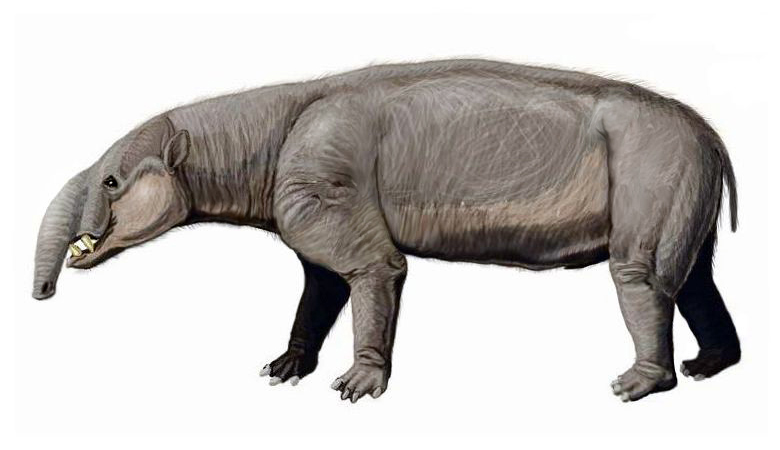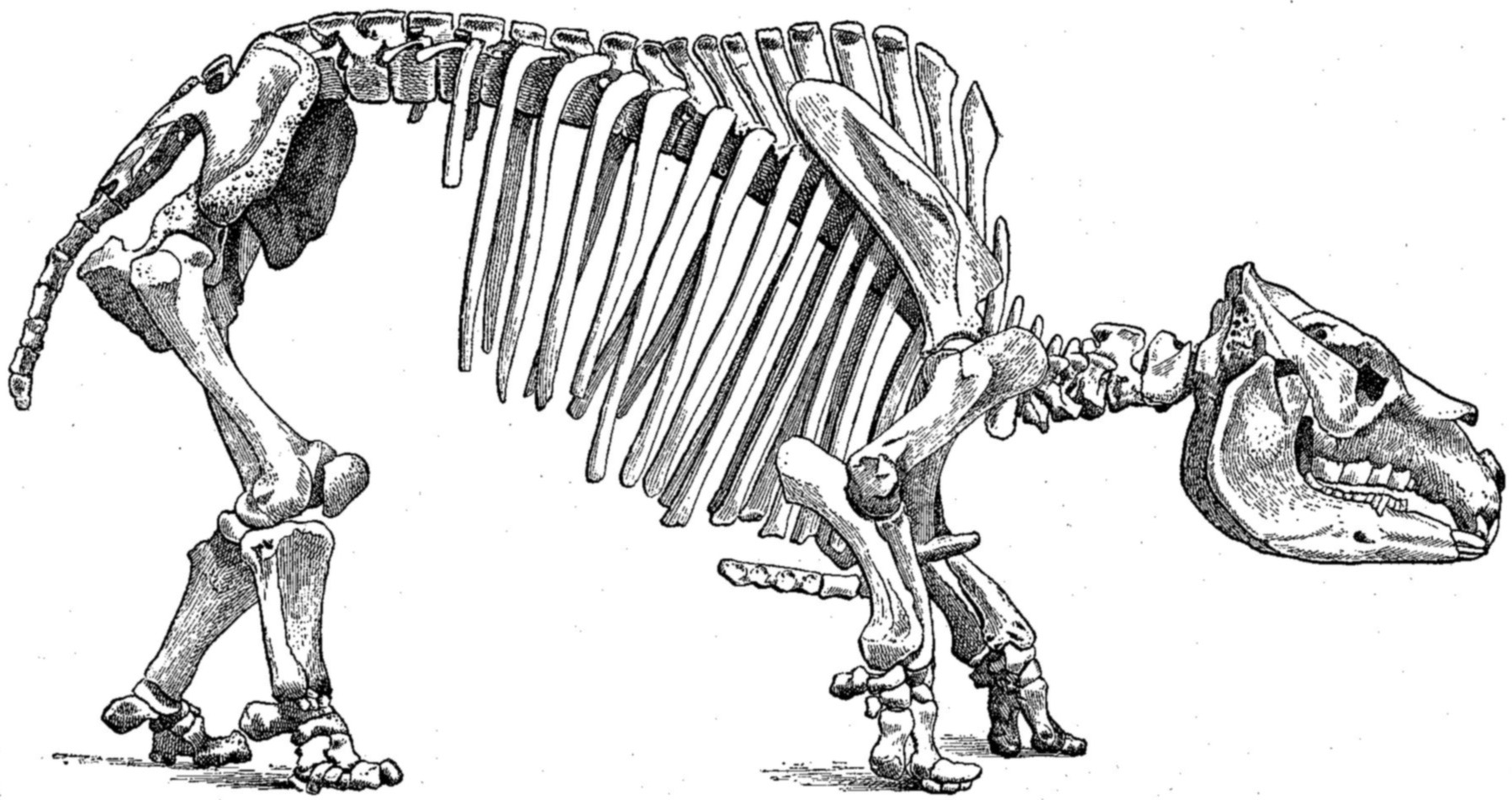|
Adinotherium
''Adinotherium'' (meaning "not terrible beast")Palmer (1904) p. 80. is an extinct genus of Toxodontidae, large bodied hoofed ungulates which inhabited South America during the Middle to Late Miocene, from 17.5 to 6.8 Ma and existed for approximately , Santacrucian to Huayquerian in the South American land mammal ages (SALMA). Fossils of ''Adinotherium'' have been found in the Santa Cruz and Ituzaingó Formations of Argentina and the Chucal and Río Frías Formations of Chile.''Adinotherium'' at .org Description [...More Info...] [...Related Items...] OR: [Wikipedia] [Google] [Baidu] |
Adinotherium Ovinum
''Adinotherium'' (meaning "not terrible beast")Palmer (1904) p. 80. is an extinct genus of Toxodontidae, large bodied hoofed ungulates which inhabited South America during the Middle to Late Miocene, from 17.5 to 6.8 Ma and existed for approximately , Santacrucian to Huayquerian in the South American land mammal ages (SALMA). Fossils of ''Adinotherium'' have been found in the Santa Cruz and Ituzaingó Formations of Argentina and the Chucal and Río Frías Formations of Chile.''Adinotherium'' at Fossilworks.org Description [...More Info...] [...Related Items...] OR: [Wikipedia] [Google] [Baidu] |
Santacrucian
The Santacrucian age is a period of geologic time (17.5 – 16.3 Ma) within the Early Miocene epoch of the Neogene, used more specifically with SALMA classification in South America. It follows the Colhuehuapian and precedes the Friasian age. Etymology The age is named after the Santa Cruz Formation in the Austral/Magallanes Basin of southern Patagonia Patagonia () refers to a geographical region that encompasses the southern end of South America, governed by Argentina and Chile. The region comprises the southern section of the Andes Mountains with lakes, fjords, temperate rainforests, and gl ..., Argentina and Chile. Formations Fossils References Bibliography ;Santa Cruz Formation * * * * * * * * * * * * * * * * ;Aisol Formation * * ;Cantaure Formation * ;Castillo Formation * * * * * ;Cerro Boleadores Formation * ;Chaguaramas Formation * ;Chilcatay Formation * * * * ;Cura-Mallín Group * * * ;Gran Bajo del Gualich ... [...More Info...] [...Related Items...] OR: [Wikipedia] [Google] [Baidu] |
Friasian
The Friasian age is a period of geologic time (16.3–15.5 Ma) within the Early Miocene epoch of the Neogene, used more specifically within the SALMA classification of South America. It follows the Santacrucian and precedes the Colloncuran age. Etymology The age is named after the Río Frías Formation in the Aysén Basin, Patagonia, Chile Chile, officially the Republic of Chile, is a country in the western part of South America. It is the southernmost country in the world, and the closest to Antarctica, occupying a long and narrow strip of land between the Andes to the east a .... Formations Fossils References Bibliography ;Río Frías Formation * * * * * ;Castilletes Formation * * * * * * * * ;Cerdas Beds * ;Chilcatay Formation * * * * ;Cura-Mallín Group * * * ;Gran Bajo del Gualicho Formation * ;Parángula Formation * ;Pebas Formation * * ;Río Foyel Formation * * ;Río Yuca Formation * {{SALMA Miocene S ... [...More Info...] [...Related Items...] OR: [Wikipedia] [Google] [Baidu] |
Río Frías Formation
Río Frías Formation ( es, Formación Río Frías) is a Miocene, Middle Miocene geologic formation made up sedimentary rock located in Aysén Region, western Patagonia. The formation crops out along the upper couse of Cisnes River ( es, Río Cisnes).Marshall & Salinas, 1990 Marsupial fossils have been found in the formation.Marshall, 1990 The Friasian period in the South American Land Mammal Ages is named after the formation. Description Río Frías Formation was discovered by Santiago Roth in the summer of 1897–98. Roth was a Swiss immigrant who had been sent to survey the area by Francisco Moreno. Moreno was director of La Plata Museum and was involved in the Cordillera of the Andes Boundary Case 1902 (Argentina, Chile), Cordillera of the Andes Boundary Case between Chile and Argentina, thus there was both a political and scientific motivation behind the exploration of Patagonia. Santiago Roth called the upper course of Río Cisnes for Río Frías being unaware that it was t ... [...More Info...] [...Related Items...] OR: [Wikipedia] [Google] [Baidu] |
Ituzaingó Formation
The Ituzaingó Formation ( es, Formación Ituzaingó), in older literature also described as Entre Ríos or Entrerriana Formation, is an extensive geological formation of Late Miocene (Tortonian, or Huayquerian in the SALMA classification) age in the Paraná Basin of the Corrientes, Santa Fe and Entre Ríos Provinces in Mesopotamia, northeastern Argentina.Ituzaingó Formation at .org The formation comprises s, cross-bedded |
Santa Cruz Formation, Argentina
The Santa Cruz Formation is a geological formation in the Magallanes/Austral Basin in southern Patagonia in Argentina and in adjacent areas of Chile. It dates to the late Early Miocene epoch, and is contemporaneous with eponymous Santacrucian SALMA. The formation extends from the Andes to the Atlantic coast. In its coastal section it is divided into two members, the lower, fossil rich Estancia La Costa Member, which has a lithology predominantly consisting of tuffaceous deposits and fine grained sedimentary Mudrock, claystone and mudstone, and the upper fossil-poor Estancia La Angelina Member, which consists of sedimentary rock, primarily claystone, mudstone, and sandstone. The environment of deposition is interpreted to have been mostly Fluvial processes, fluvial, with the lowermost part of the Estancia La Costa Member being transitional between fluvial and marine conditions. The environment of the Estancia La Costa Member is thought to have been relatively warm and humid, but ... [...More Info...] [...Related Items...] OR: [Wikipedia] [Google] [Baidu] |
Toxodontidae
Toxodontidae is an extinct family of notoungulate mammals, known from the Oligocene to the Holocene (11,000 BP) of South America, with one genus, ''Mixotoxodon'', also known from the Pleistocene of Central America and southwestern North America (Texas).E. Lundelius, et al. 2013. The first occurrence of a toxodont (Mammalia, Notoungulata) in the United States. ''Journal of Vertebrate Paleontology'', Vol 33, No 1, pp. 229–23DOI:10.1080/02724634.2012.711405/ref> They somewhat resembled rhinoceroses, and had teeth with high crowns and open roots, suggesting that they often fed on tough pampas grass. However, isotopic analyses have led to the conclusion that the most recent forms were grazing and browsing generalists. Taxonomy The endemic notoungulate and litoptern ungulates of South America have been shown by studies of collagen and mitochondrial DNA sequences to be a sister group to the perissodactyl Odd-toed ungulates, mammals which constitute the taxonomic order Perisso ... [...More Info...] [...Related Items...] OR: [Wikipedia] [Google] [Baidu] |
Huayquerian
The Huayquerian ( es, Huayqueriense) age is a period of geologic time (9.0–6.8 Ma) within the Late Miocene epoch of the Neogene, used more specifically within the SALMA classification. It follows the Mayoan and precedes the Montehermosan age. Etymology The age is named after the Huayquerías Formation in the western Cuyo Basin of northwestern Argentina that was later dated to the Montehermosan. The most complete Huayquerian fauna is found in the Cerro Azul Formation The Cerro Azul Formation ( es, Formación Cerro Azul), in the Buenos Aires Province also described as Epecuén Formation, is a geological formation of Late Miocene (Tortonian, or Huayquerian in the SALMA classification) age in the Colorado Basin ..., in Buenos Aires Province also referred to as Epecuén Formation. Formations Fossil content Correlations Notes and references Notes References Bibliography ;Huayquerías Formation * * ;Andalhuala Formation * ;Camacho Formation * * ... [...More Info...] [...Related Items...] OR: [Wikipedia] [Google] [Baidu] |
Toxodon
''Toxodon'' (meaning "bow tooth" in reference to the curvature of the teeth) is an extinct genus of South American mammals from the Late Miocene to early Holocene epochs (Mayoan to Lujanian in the SALMA classification) (about 11.6 million to 11,000 years ago). It is a member of Notoungulata, one of several now extinct orders of hoofed mammals indigenous to South America distinct from living perissodactyls and artiodactyls. It was among the largest and last members of its order, and was probably the most common large hoofed mammal in South America of its time. Taxonomy ''Toxodon'' was one of the last members of Notoungulata, a group of ungulates that had been part of the fauna of South America since the Paleocene. ''Toxodon'' was a member of Toxodontidae a large bodied group including similar, vaguely rhinoceros like forms. Charles Darwin was one of the first to collect ''Toxodon'' fossils, after paying 18 pence for a ''T. platensis'' skull from a farmer in Uruguay ... [...More Info...] [...Related Items...] OR: [Wikipedia] [Google] [Baidu] |
Colloncuran
The Colloncuran ( es, Colloncurense) age is a period of geologic time (15.5–13.8 Ma) within the Middle Miocene epoch of the Neogene, used more specifically within the SALMA classification in South America. It follows the Friasian and precedes the Laventan age. Etymology The age is named after the Collón Curá Formation in the Cañadón Asfalto and Neuquén Basins of northern Patagonia, Argentina Argentina (), officially the Argentine Republic ( es, link=no, República Argentina), is a country in the southern half of South America. Argentina covers an area of , making it the second-largest country in South America after Brazil, th .... Formations Fossils References Bibliography ;Collón Curá Formation * * * * * * * * * * * * * * * * * * * * * * * * * * * ;Castilletes Formation * * * * * * * * ;Cura-Mallín Group * * * ;Gran Bajo del Gualicho Formation * ;Nazareno Formation * * * * ;Pebas Formation ... [...More Info...] [...Related Items...] OR: [Wikipedia] [Google] [Baidu] |
Laventan
The Laventan ( es, Laventense) age is a period of geologic time (13.8 to 11.8 Ma) within the Middle Miocene epoch of the Neogene, used more specifically within the SALMA classification in South America. It follows the Colloncuran and precedes the Mayoan age.Madden et al., 1997 Etymology The age is named after the Miocene Lagerstätte La Venta, where a rich biodiversity from the Middle Miocene has been recovered from the Honda Group. Formations Fossil content Correlations The Laventan (13.8 to 11.8 Ma) correlates with: * NALMA ** latest Barstovian (15.97-13.65 Ma)Barstovian at Fossilworks.org ** early |
Mayoan
The Mayoan ( es, Mayoense) age is a period of geologic time from 11.8 to 10 Ma, within the Middle to Late Miocene epoch of the Neogene, used more specifically within the SALMA classification in South America. It follows the Laventan and precedes the Chasicoan age. Etymology The age is named after the Río Mayo Formation in the Golfo San Jorge Basin of Patagonia Patagonia () refers to a geographical region that encompasses the southern end of South America, governed by Argentina and Chile. The region comprises the southern section of the Andes Mountains with lakes, fjords, temperate rainforests, and gl ..., Argentina. Formations Fossil content References Bibliography ;Río Mayo Formation * ;Coquimbo Formation * ;Gran Bajo del Gualicho Formation * ;Huaylas Formation * * ;Mauri Formation * ;Navidad Formation * ;Paraná Formation * * ;Pebas Formation * * ;Pisco Formation * * * * * * * * * * * * * * ;Puerto Madryn Formation * ... [...More Info...] [...Related Items...] OR: [Wikipedia] [Google] [Baidu] |




